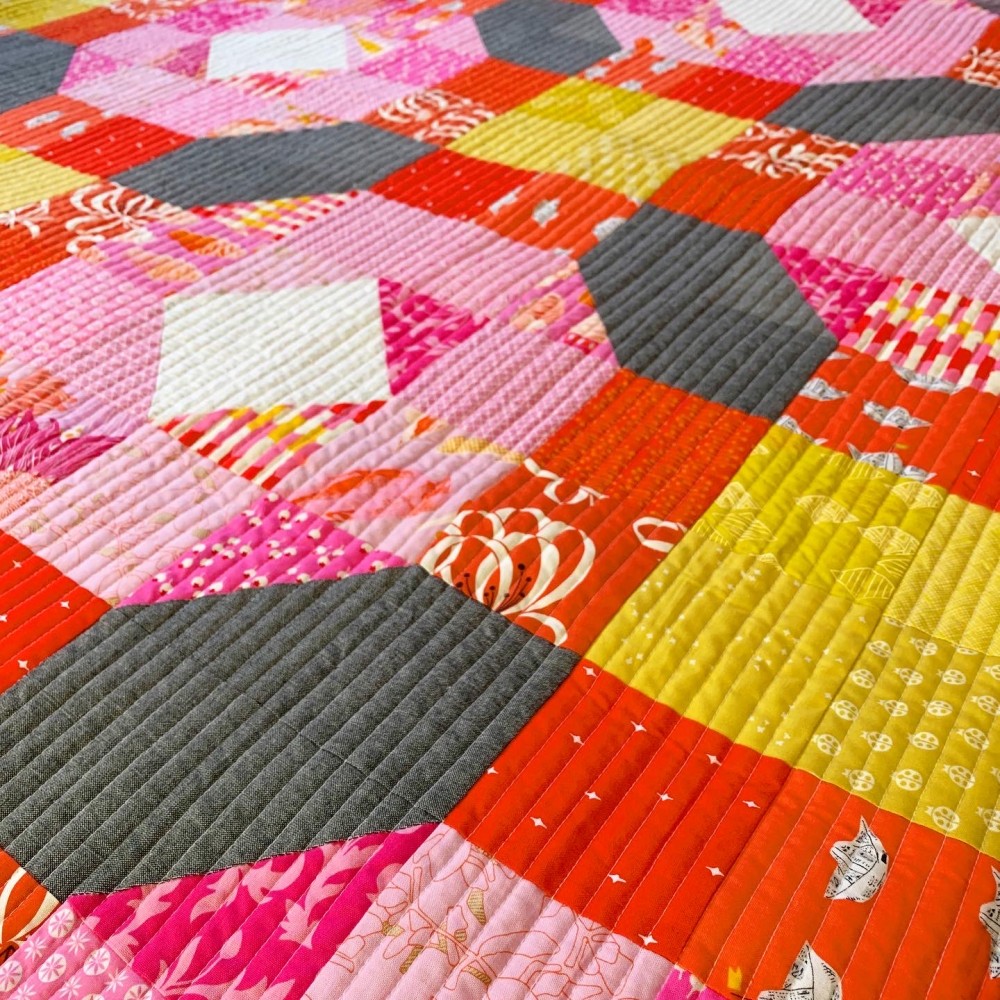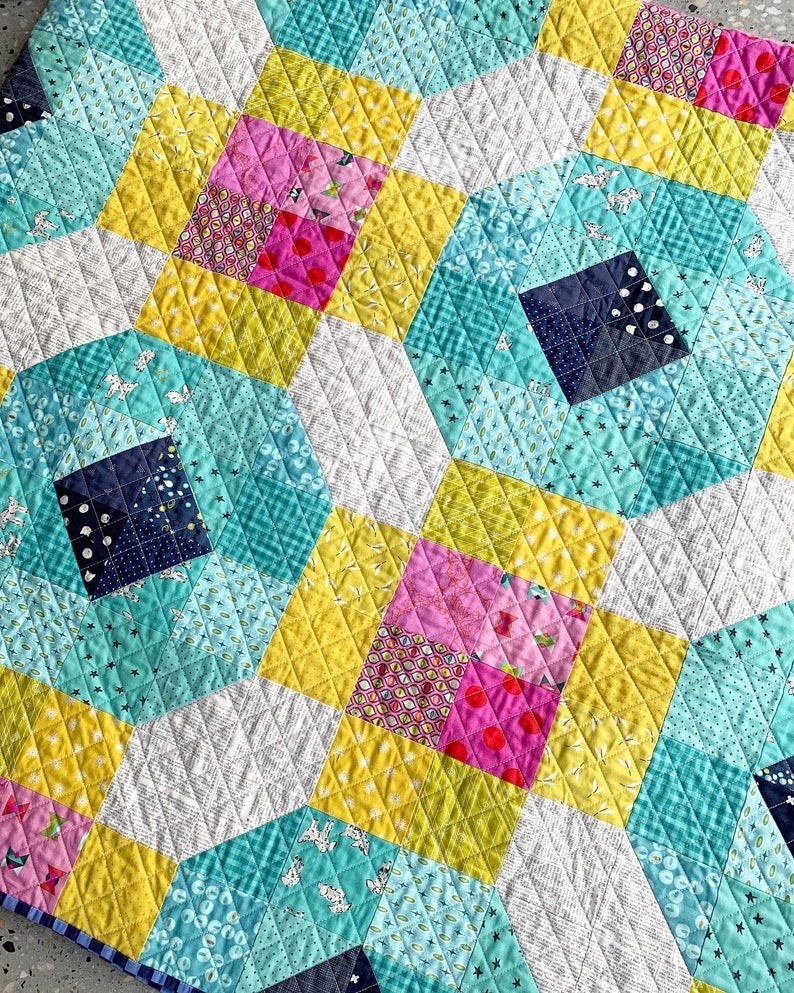Week 5 - Wake Me Up Quilt Sew Along
Dec 20, 2021 - 7:51pm

1

0
Wake Me Up Quilt Sew-Along Week 5
Welcome to Week 5 of the Wake Me Up sew-along.
Are you ready to sew this quilt together? This week we’ll be piecing your quilt top using all your fabulous blocks.
If you have just joined the SAL… well friend… better late than never I suppose! Be sure to grab the pattern, read up on all the details and choose your fabrics soon so you can catch up and join in the fun!
There is also a Facebook Group for those of you that would like a little more interaction!
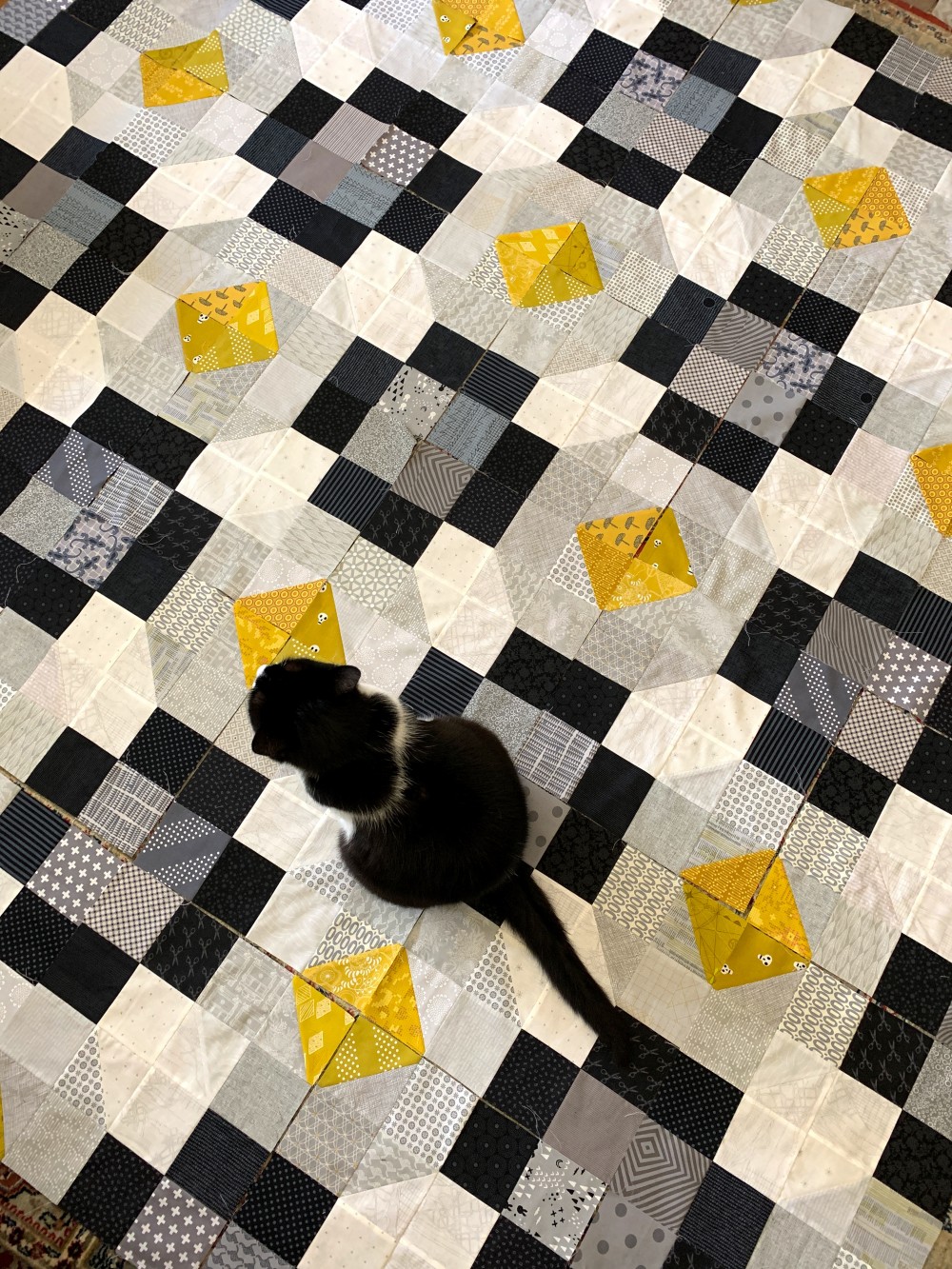
SHARE ON INSTAGRAM
Don’t forget to post a pic of your second lot of finished blocks on IG and be sure to the use the #wakemeupsal and #wakemeupquilt hashtags to make it easier for others to find your photos.
HOORAY FOR PRIZES
In some rather exciting news, we have some prizes! The wonderful and generous ladies from The Quilt Shop have kindly donated a $100 gift voucher, and Sue from Millrose Cottage has chipped in a $50 gift Voucher.
All you need to do to be in the running is make sure your finished quilt top is posted to Instagram by May the 7th. If you’ve already finished your quilt top and posted a picture, don’t worry – you’re in the running for the prizes!
These two shops have also put together some terrific kits for the Wake Me Up quilt if you felt like making another one!
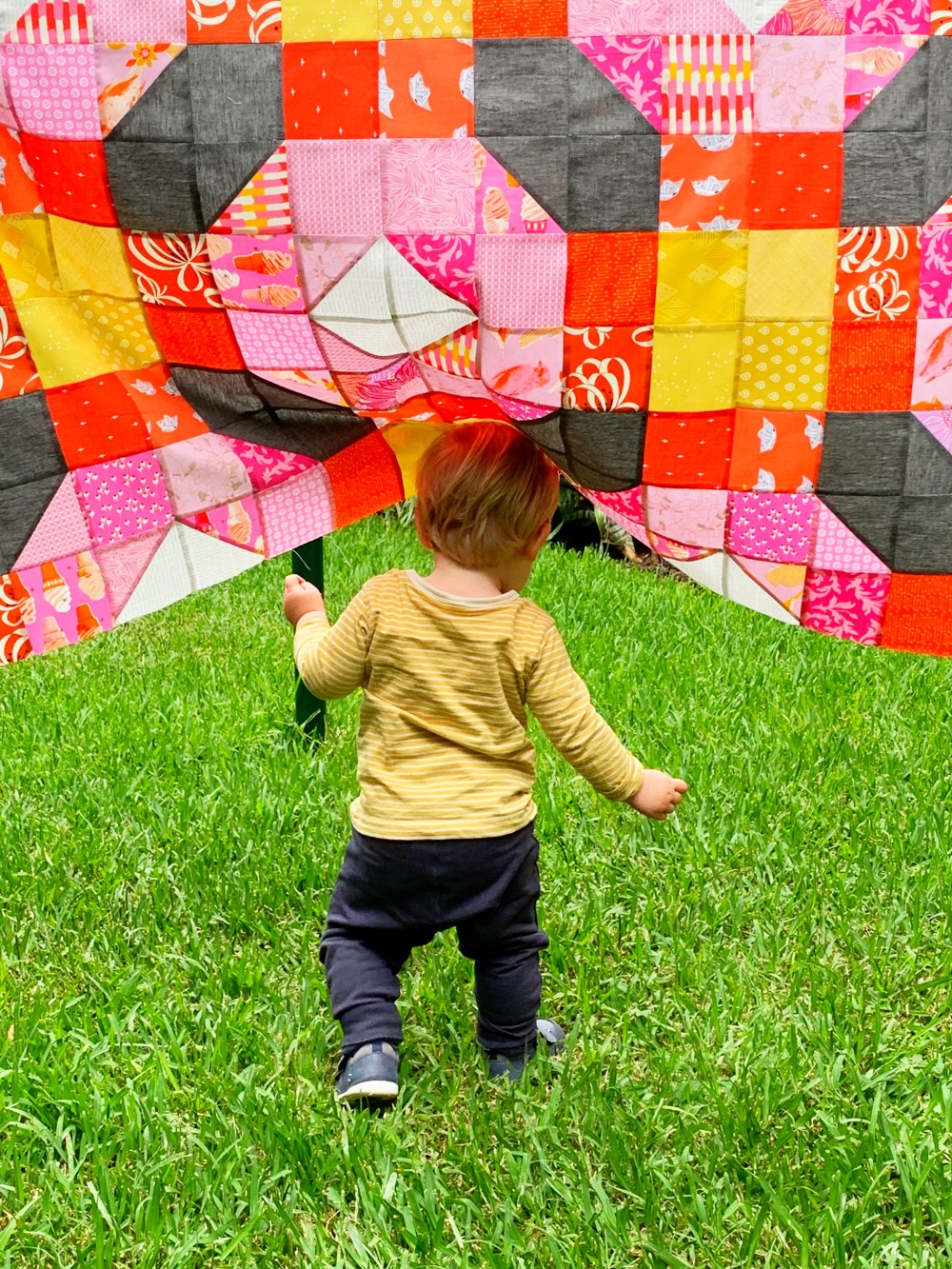
PIECING THE QUILT TOP
Now it's finally time to put all your quilt blocks together!
Sew the blocks together in rows, blah blah blah. If you have come this far, I'm quite sure you can work out how to piece a quilt top.
Just remember to press each alternative row of blocks in different directions so the seams nest nicely together.
TOOLS OF THE TRADE
As this is the last newsletter before we announce the winners, I thought I might talk a little about quilting. I love to use straight lines in all my quilts and I have discovered a few things that might help you too!
Firstly, what you'll need:
Walking Foot for your machine – you may have to purchase this separately as most machines don't come with one, unless you’re a lucky duck and have bought a quilting edition - sometimes they include these as part of the package.
A walking food basically does the same thing as the feed dogs on your machine, except from above. It helps to feed the three layers of your quilt through evenly so that the fabric doesn’t bunch up.
40wt Thread - now this is just what I like to quilt with, so if you prefer something else, go for it! I like it because it's a little stronger and it also makes the quilting a bit more of a feature. I like to use Aurifil Thread, 100% cotton.
Basting Spray and/or Safety Pins for basting - I like to use both. I don't have a large sewing table to work on so all the help I can get, I take!
The safety pins are stainless steel, size 2. There are some fancy curved pins on the market which are great too. The basting spray is called 505 Temporary Adhesive. I like this brand as it has hardly any smell and stays stuck!
Hera Marker – A Hera marker is an awesome piece of plastic that allows you to mark your quilt without using a pencil/washout marker. The Hera marker places a fold in the fabric when your quilt top is basted that stays for a good amount of time. I love it because there is no need to wash out line markings afterwards. Just use your quilting ruler to get lovely straight lines.
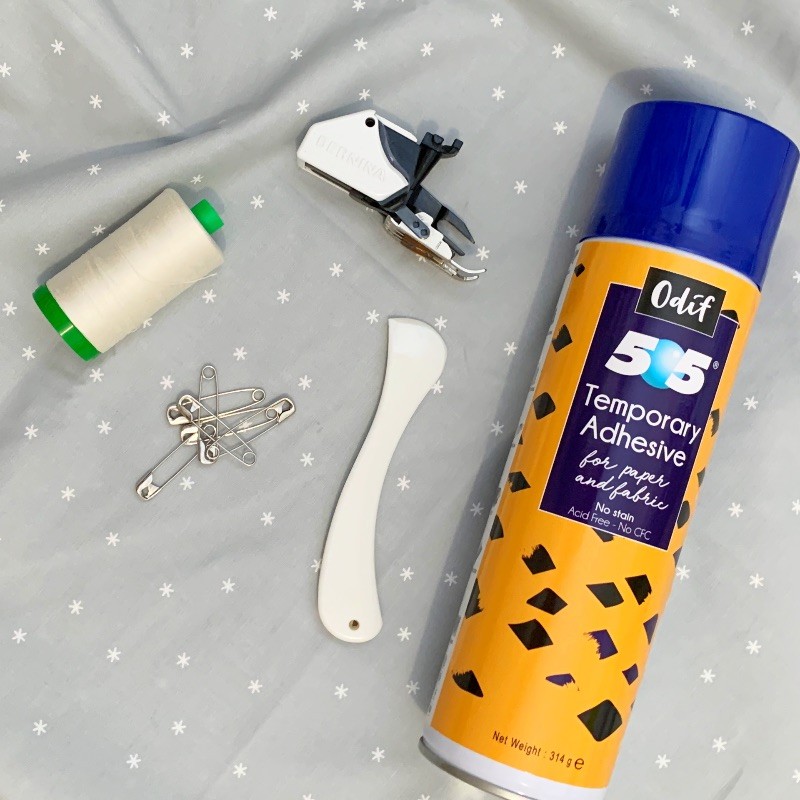
BASTING
The first thing you’ll need to do is baste your quilt. Once you have pieced your backing, lay it down with the right side to the floor. Some people baste on their kitchen table, some on the wall and others on their dining room or lounge room floor. It’s totally up to you!
I lay my quilt backing on my lounge room floor and tape down the edges to keep the backing taut. Then I layer the batting on top and baste it to the backing using the basting spray. Next, I layer the quilt top, right side up and baste it to the batting and backing.
Finally, I plonk myself down in the middle of the quilt and start pinning from the centre out, every 3 inches of so!
You can see me basting my original Wake Me Up Quilt at light speed here.
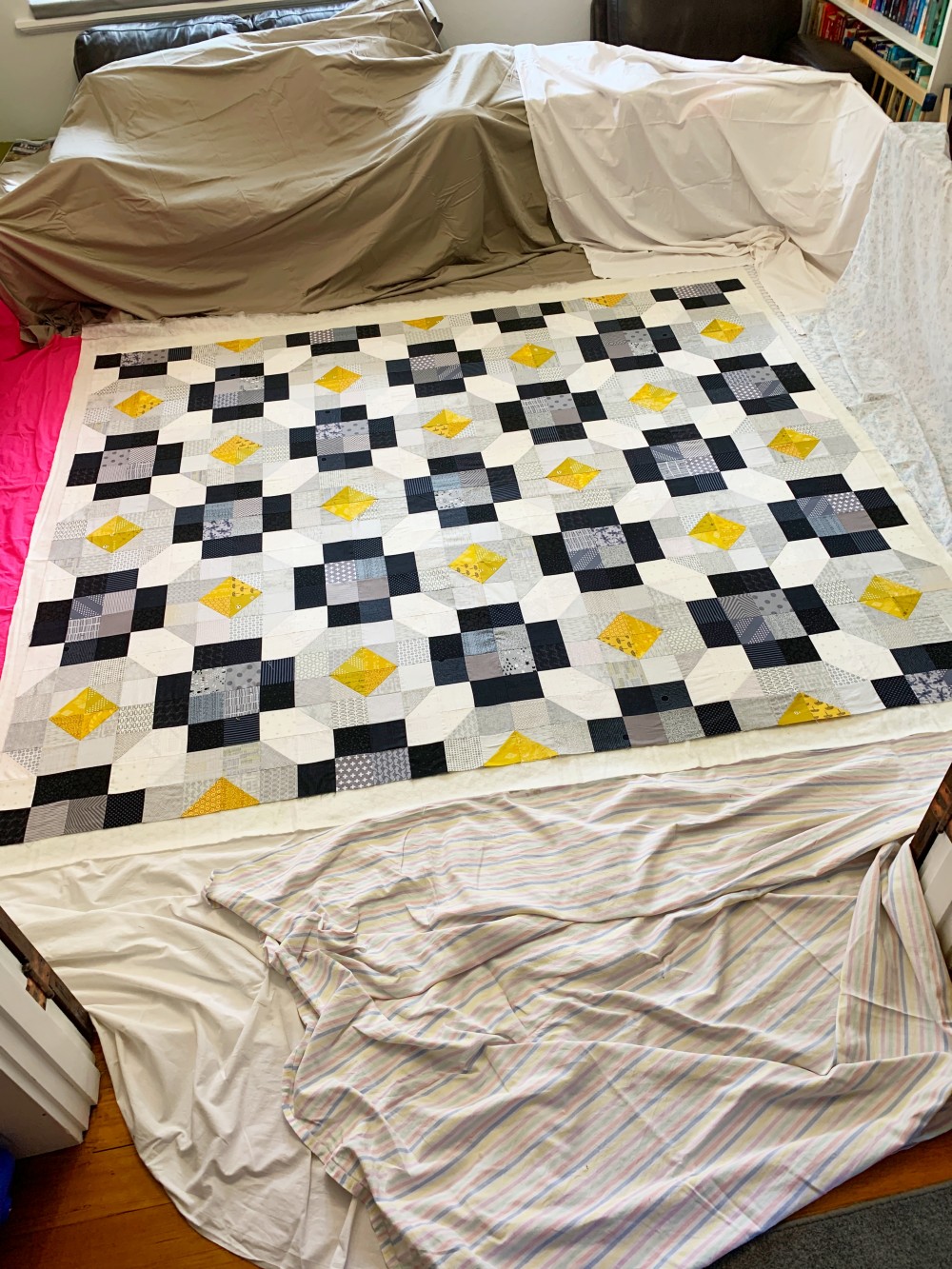
The quilt above has been quilted with quarter inch spaced lines.
The best way to explain how I do this is with a diagram.
My approach for this quilt was to begin in the middle of the quilt. I quilted the first red line (marked with 1 on the diagram) and then continued sewing the rest of the red lines to the right hand side of the quilt.
Then I went back and quilted all of the green lines in between the red lines. Once all the green lines were done I went back and did the blue lines. After the blue I did all the yellow and so on until the quilting was a quarter inch apart.
The idea is that the red lines anchor the quilt. Then you go back and fill in the gaps. If you tried to do the heavy quarter inch quilting from the first row, your quilt would end up distorted and no-one wants that!
Just remember, after you’ve completed all the red lines, you need to flip the quilt around, so you’re quilting from the other side and working from the middle to the right, before you go back and do the blue, green and yellow lines.
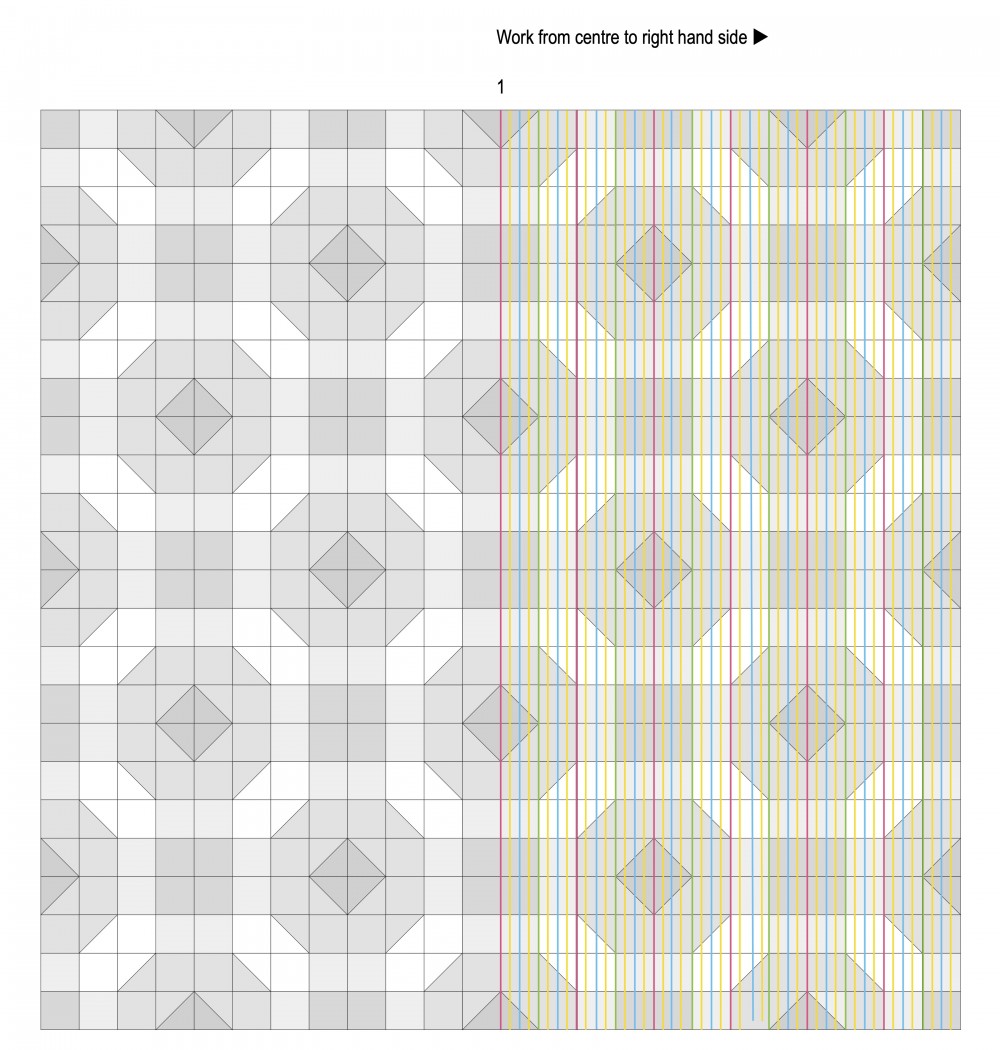
To get the quilt into position to feed through the sewing machine you need to roll it up. It makes it must easier to handle and to fit through the throat of your sewing machine. See the pictures below.
Buffy is also showing how comfortable a quilt roll can be!
Please note the space at the end of the table, this allows the quilt to hang off the end as it passes through rather than getting bunched up.
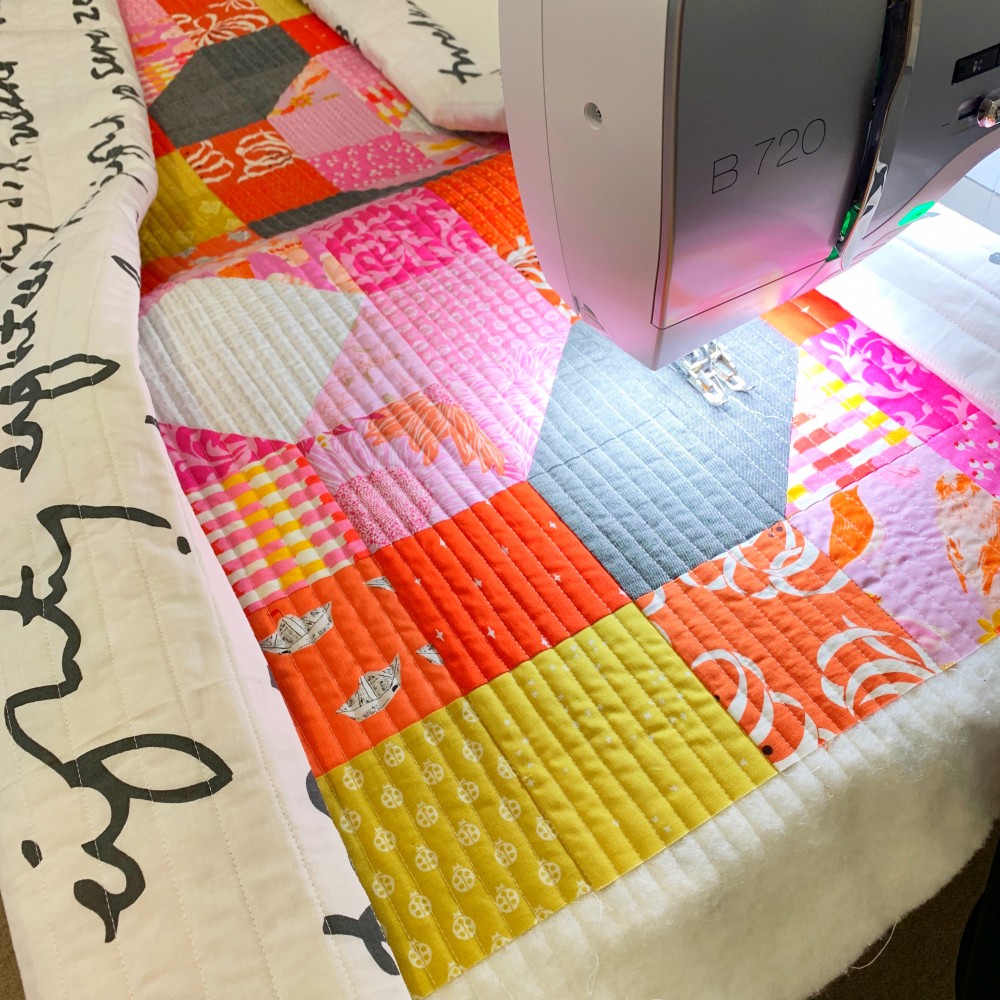
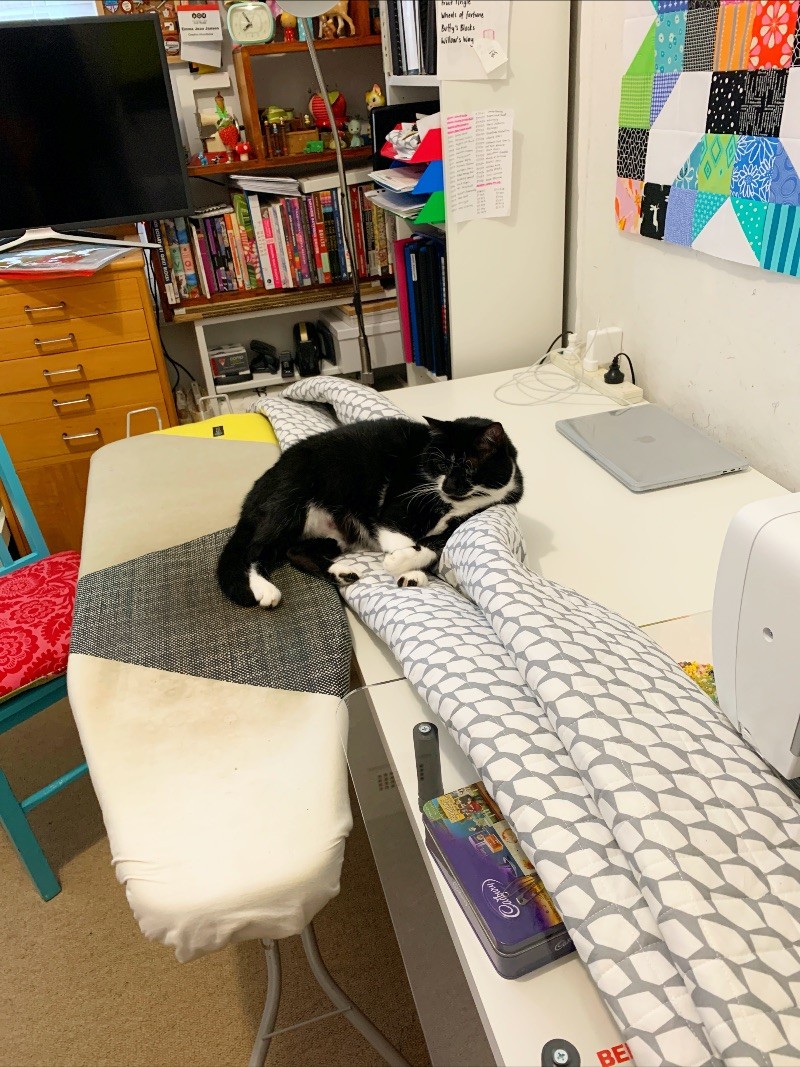
The other style of straight line quilting I like to do is cross hatching. This is done in the same way as the previous quilt. Start with your anchor lines of quilting and then go back and slowly fill in the gaps.
Please note that my lines are not perfect, they never are. I wobble and move around with the best of them, but the wonderful thing about this style of quilting is it doesn't matter. Once it’s all done you notice the effect - not how straight the lines are.
If you’re not comfortable quilting using just the force, that's where the fabulous Hera Marker comes in handy. This white piece of plastic creates a fold or indentation on the fabric that lasts for ages.
Using your quilting ruler to keep the lines straight, run the Hera Marker along the fabric pushing down firmly. You’ll see that it leaves an indentation on your quilt which you can use as your guide for when you’re quilting. I used it in the quilt below.
Again, this version of my Wake Me Up Quilt was quilted with straight lines, but this time I decided to echo the seams by quilting a quarter inch either side. There were some parts of the quilting design that made it tricky just to eye it in, so I marked it up with the Hera Marker.
Just note, I did all the anchor lines first so I could then remove the pins. It makes it much easier to place a ruler on the quilt once the pins are gone. I also mark up with the Hera Marker on the floor. It's a bit hard on the back but unless you have a large table (I don't) the floor is the best option.

So that's it my friends. The last week of my first ever Sew-Along!
Don’t forget to post a picture of your finished quilt on Instagram before midnight Thursday, 7 May 2020 to be in the running for the prizes!
Keep an eye out for my final newsletter on 8 May where I will announce the winners and showcase some of my favourite sew along quilts made by you guys!
I’ve had an amazing time sharing my quilt with you all and a few tips and tricks along the way. I plan to do a few more in the future so stay tuned!
I would like to say a big thank you to you all. Obviously this would not have been possible without you purchasing the pattern and sharing your photos on Instagram. I am so grateful for all the support and I’m hoping you got just as much as I did out of the sew-along.
Stay Safe,
Emma x

